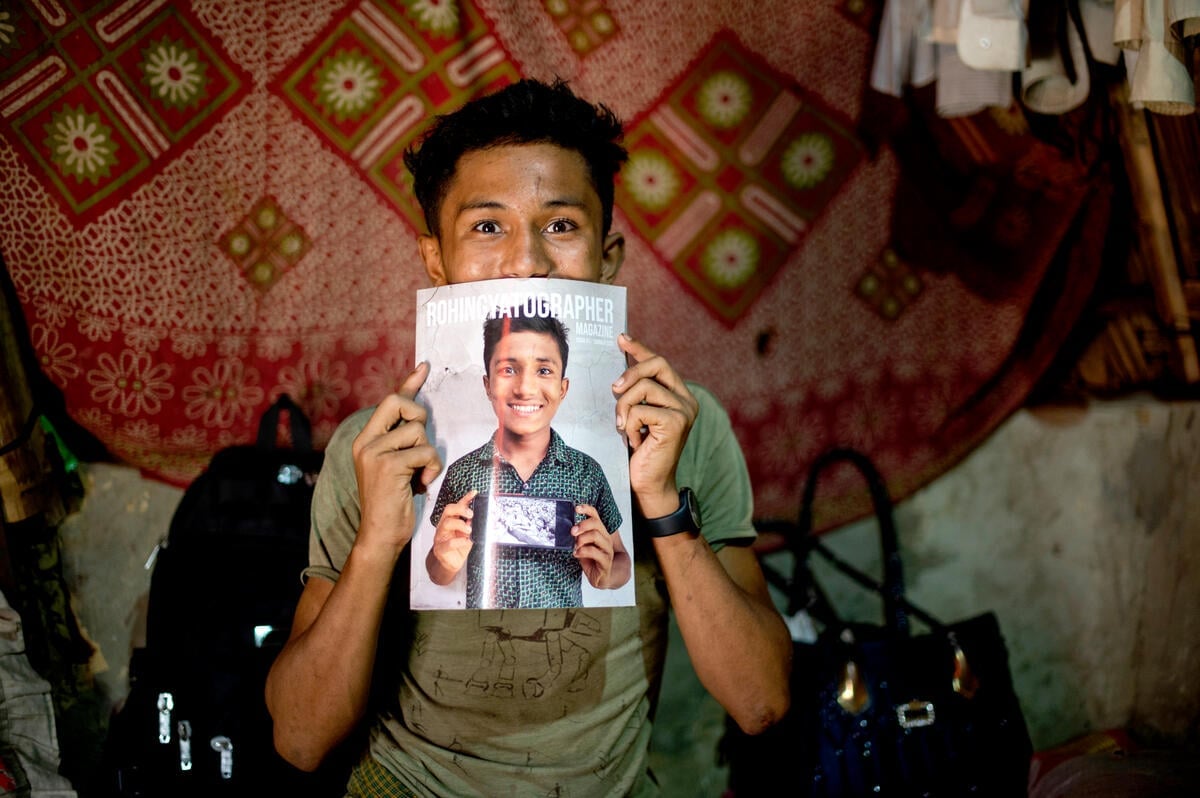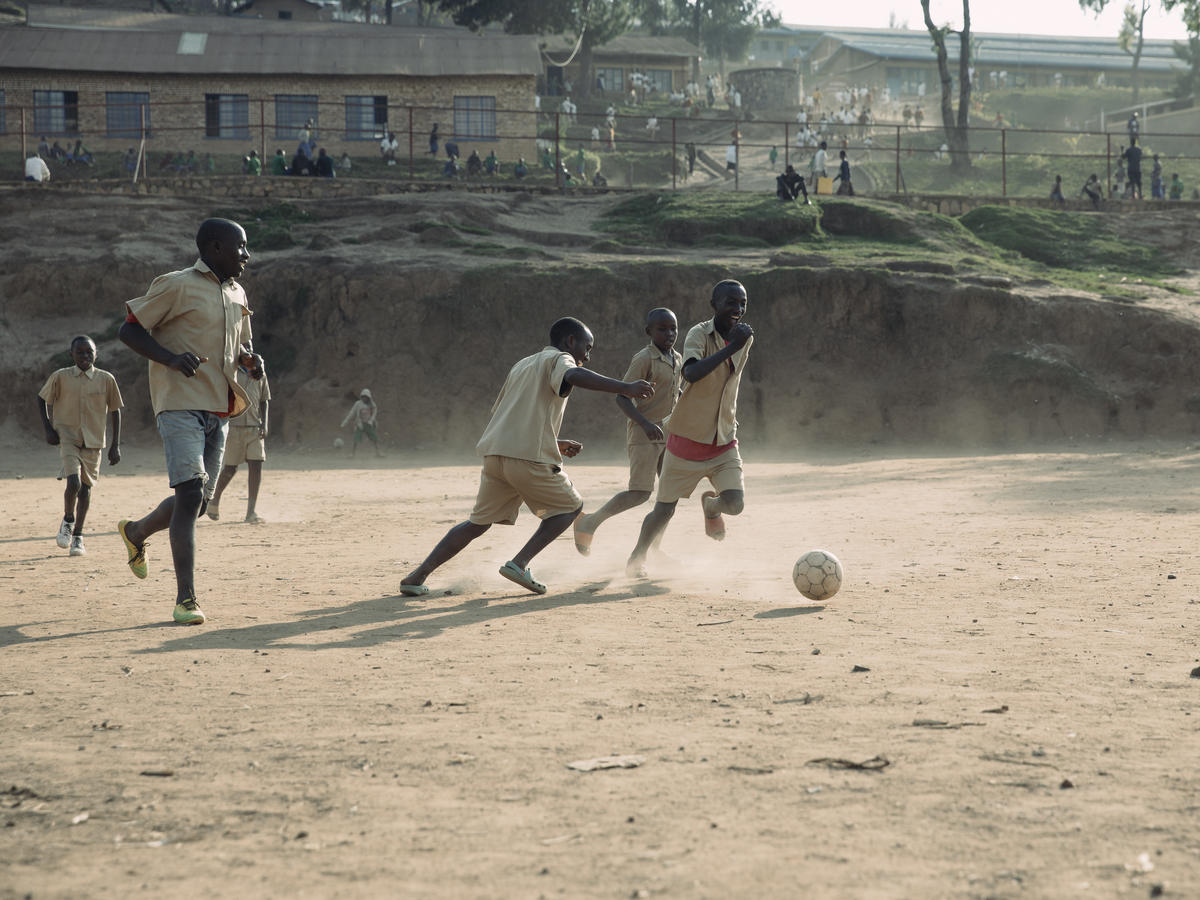Refugee athletes blaze a trail for disability inclusion through sport
Refugee athletes blaze a trail for disability inclusion through sport

The six refugee Paralympians currently competing in Tokyo are demonstrating the power of sport to promote inclusion and transform the lives of an estimated 12 million displaced people currently living with disabilities. UNHCR's protection officer for disability inclusion Ricardo Pla Cordero, sets out the challenges facing people with disabilities in situations of forced displacement, and describes what UNHCR, the UN Refugee Agency, is doing around the world to ensure they have access to the same rights and freedoms as everyone.
What is the significance of the Refugee Paralympic Team to you?
I really had the feeling that these six athletes — one woman and five men, who originally come from four different countries — were breaking new ground in international sport competitions when I saw them leading the parade of athletes. Now, refugees with disabilities also have a space to compete on an equal basis with others.
How many refugees and other forcibly displaced people are living with disabilities?
There is no exact figure, although it is estimated that there are 12 million forcibly displaced people including refugees living with disabilities. That’s based on applying the percentage of people with disabilities in broader society – about 15 per cent – to the 82.4 million people who have been forcibly displaced from their homes by war, violence and persecution. However, humanitarian surveys show that the prevalence of disability in these contexts may be much higher. For example, a 2019 survey by UNHCR in Jordan showed that 21 per cent of Syrian refugees living there have a disability.
What is the impact of displacement on people with disabilities?
Evidence shows that people with disabilities feel the impact of displacement more dramatically than those without physical, psychosocial, intellectual or sensory impairments. They are often at higher risk of violence, discrimination, exploitation and abuse. They face barriers in accessing basic services and are often excluded from educational and livelihood opportunities. They may also confront negative attitudes from those in the community or service providers, or even be subject to targeted attacks in some contexts where stigma and prejudices against those with disabilities are very high. Such issues are frequently reported across UNHCR operations.
What does UNHCR do to help people with disabilities?
What UNHCR does is to help refugees and internally displaced people access the same fundamental rights and freedoms as anyone else. In some places, for example, refugees will not have the same rights as citizens of the countries where they live. The same can also happen to refugees with disabilities, who may not be able to access social protection programmes as nationals with disabilities, for example. We work with partners and UN member states to uphold the Convention on the Rights of Persons with Disabilities, which recognizes people with disabilities as part of human diversity and requires states to ensure that they can access rights on an equal basis.
That sounds like it could be difficult to implement in practice. What approach does UNHCR take?
UNHCR has adopted a community-based approach, in which community members are engaged to help remove barriers that may hinder people with disabilities from gaining access to the same services or assistance, such as access to water and food supplies, or to classrooms, that other refugees do. It may also involve training teachers to include children with disabilities in their classes, or facilitating access to assistive devices such as wheelchairs.
Are refugee camps difficult places for people with disabilities to live?
Refugee camps present challenges for all people living there, but can be particularly difficult environments for those with disabilities. Because these are temporary settlements, there is usually no long-term planning to install infrastructure such as paved roads or ramps for wheelchairs. There are often open sewers or gutters. Also, people with disabilities often don’t have the same access to key information in refugee camps, which is often spread through leaders or in central areas, and they struggle to reach those places where information is disseminated. So yes, they're particularly unfriendly settings for people with disabilities.
What about refugees who live in urban areas, as more than two thirds do today?
Cities can also be very inaccessible, and refugees tend to live in poorly developed urban areas with less access to transport or livelihood opportunities. A community-based approach is also applicable to these contexts, supporting access to education and livelihoods through individual empowerment, skills training, assistive devices, or cash support to cover additional expenses related to transport, for example. For those living in areas with established services for national citizens with disabilities, establishing linkages with national disability networks and organizations for refugees is key.
How does UNHCR work with advocacy groups and community-based organizations to help refugees with disabilities?
UNHCR recognizes the central role of people with disabilities, including refugees, as actors of change. We work with the International Disability Alliance, a network representing thousands of organizations for people with disabilities, to strengthen their participation in the response to refugee situations. For example, one of their members called RIADIS, the Latin American Network of Persons with Disabilities and their Families, produced a series of information materials in 2020 for refugees with disabilities on the prevention and response to COVID-19 and on tackling gender-based violence. This year they have published a full report on the situation facing refugees with disabilities in the Americas, in collaboration with UNHCR and partners in the region. High-level supporters such as Nujeen Mustafa and Paralympian Abbas Karimi use their influence to advocate on behalf refugees with disabilities as well.
What role can sport play in all this?
Access to and participation in sport is a right under the Convention on the Rights of Persons with Disabilities, including for refugees. Sport provides a welcoming space for refugees and local communities to develop friendships, promoting peaceful coexistence. Sport also encourages physical and psychological wellbeing, and develops the life skills and self-confidence needed to pursue your own goals. Alia Issa, Anas, Parfait, Ibrahim, Shahrad and Abbas are breaking down barriers by doing what they most enjoy; participation in sport can be a way of changing the world, for anyone.
The Refugee Paralympic Team were rewriting the narrative as they led the parade of athletes at the opening ceremony, even if it happened in an empty stadium. They have shown the importance of representation, and what people with disabilities – including refugees – can achieve when given access to the same opportunities as others. In getting behind and supporting the team, I hope people will also support the inclusion of refugees with disabilities in all other aspects of society.
To learn more about UNHCR’s work on behalf of people with disabilities, visit: UNHCR - Persons with Disabilities









